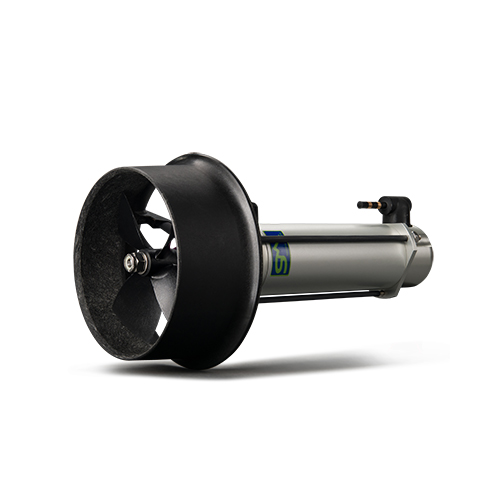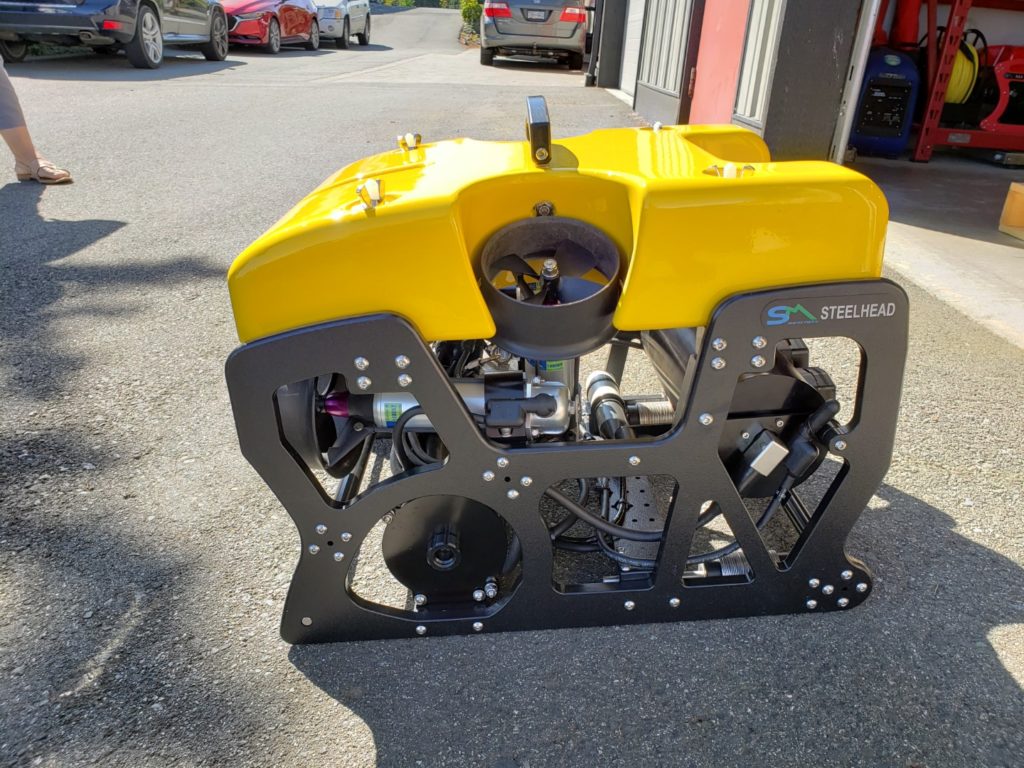One critical aspect of ROV design is the choice between hydraulic and electric thrusters, each with its own set of advantages and disadvantages. In this blog, we’ll explore the differences between these two propulsion systems and discuss the pros and cons of each.
Hydraulic thrusters are a popular choice for many ROV applications, and for good reason. They operate by using hydraulic fluid to convert mechanical power into thrust.
Electric thrusters are another popular option for ROVs, operating by converting electrical power into mechanical thrust through propellers.
The choice between hydraulic and electric thrusters for ROVs ultimately depends on the specific mission requirements and environmental factors. For precise tasks, missions with limited space, and work at depth, hydraulic thrusters are often the preferred choice. This propulsion systems is more powerful, more stable, and easier to control. In contrast, electric thrusters are more suitable for missions that prioritize simplicity and quiet operation without the need for stability and top notch maneuverability. Think about mapping and exploration missions.
Pros of Electric Thrusters
- Simplicity. Electric thrusters are simpler in design compared to hydraulic systems, requiring fewer components and less maintenance.
- Clean Operation. Electric thrusters do not involve the use of hydraulic fluid, reducing the risk of environmental contamination. This makes them a more eco-friendly choice for certain missions.
- Low Noise. Electric thrusters produce less noise compared to their hydraulic counterparts. Noise reduction is advantageous when working in sensitive acoustic environments or with marine life.
- Scalability. Electric propulsion systems can be easily scaled up or down to meet specific mission requirements, making them versatile for a variety of ROV sizes and applications. It should be noted that some hydraulic systems can do the same.
Cons of Electric Thrusters
- Lower Power Output. Electric thrusters typically offer lower power and thrust compared to hydraulic systems. Thus, limiting their suitability for heavy-duty tasks or working in strong currents.
- Reduced Efficiency at Depth. As water depth increases, electric thrusters are likely to experience reduced efficiency. This is due to the increased hydrostatic pressure, which can limit their depth capabilities.
- Limited Control. Electric thrusters may provide less precise control over thrust and maneuverability, which can be a disadvantage for certain mission types.

Pros of Hydraulic Thrusters
- High Power and Efficiency. Hydraulic systems can deliver high power levels, making them ideal for heavy-duty tasks such as deep-sea exploration, construction, and intervention. They are highly efficient in transferring power from the source to the thrusters, resulting in excellent thrust output.
- Precise Control. Hydraulics offer precise control over thrust and rotational speed, making it easier to perform delicate and intricate maneuvers in challenging underwater environments.
- Compact Design. Hydraulic components are known for their compact design, allowing for the creation of relatively smaller and more maneuverable ROVs.
- Reliability. Hydraulic systems are durable and reliable, making them a preferred choice for long-duration missions in demanding conditions.
Cons of Hydraulic Thrusters
- Complexity. Hydraulic systems tend to be more complex and require additional components such as pumps, reservoirs, and hoses, which can increase the overall weight and maintenance requirements. This does depend on the quality and skill of the ROV manufacturer.
- Fluid Leakage. Hydraulic systems are susceptible to fluid leakage, which can be a significant concern, especially in environmentally sensitive areas.
SEAMOR Marine Thrusters
We stay true to our reputation and provide you with high-quality hydraulic thrusters. Much of the differences between electric and hydraulic ROV thrusters lies in the hands of the manufacturers and mission type. Each of our thrusters can be replaced separately and are easy to maintain. They just need a good rinse after a day at work. Our modular build allows for very deliberate placement of the thrusters which maximises their proficiency and increases ROV stability and maneuverability to the max. We bet you can’t find a more stable system out there!
Even if you do not have a SEAMOR Marine ROV, you can still get a hold of our thrusters via our webshop. They are compatible with a host of other ROVs currently on the market. If you’d like to test our ROV stability and maneuverability, get in touch for a chat and/or a demo. For more information you can also check out this post.

